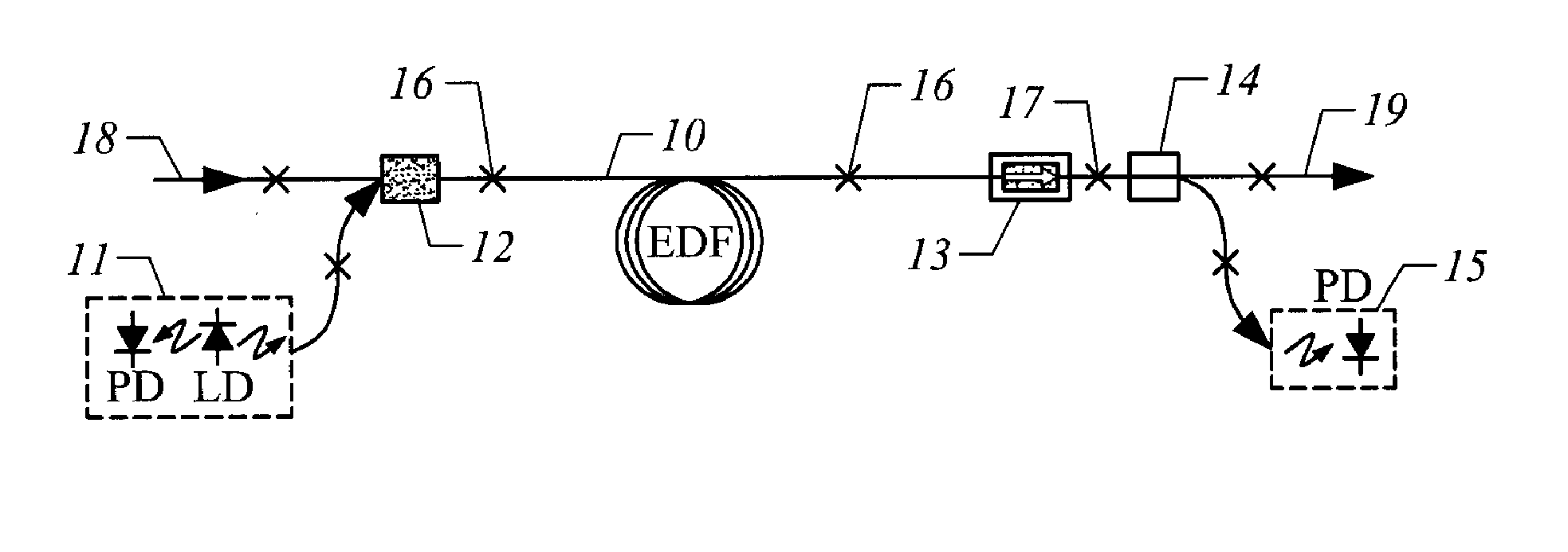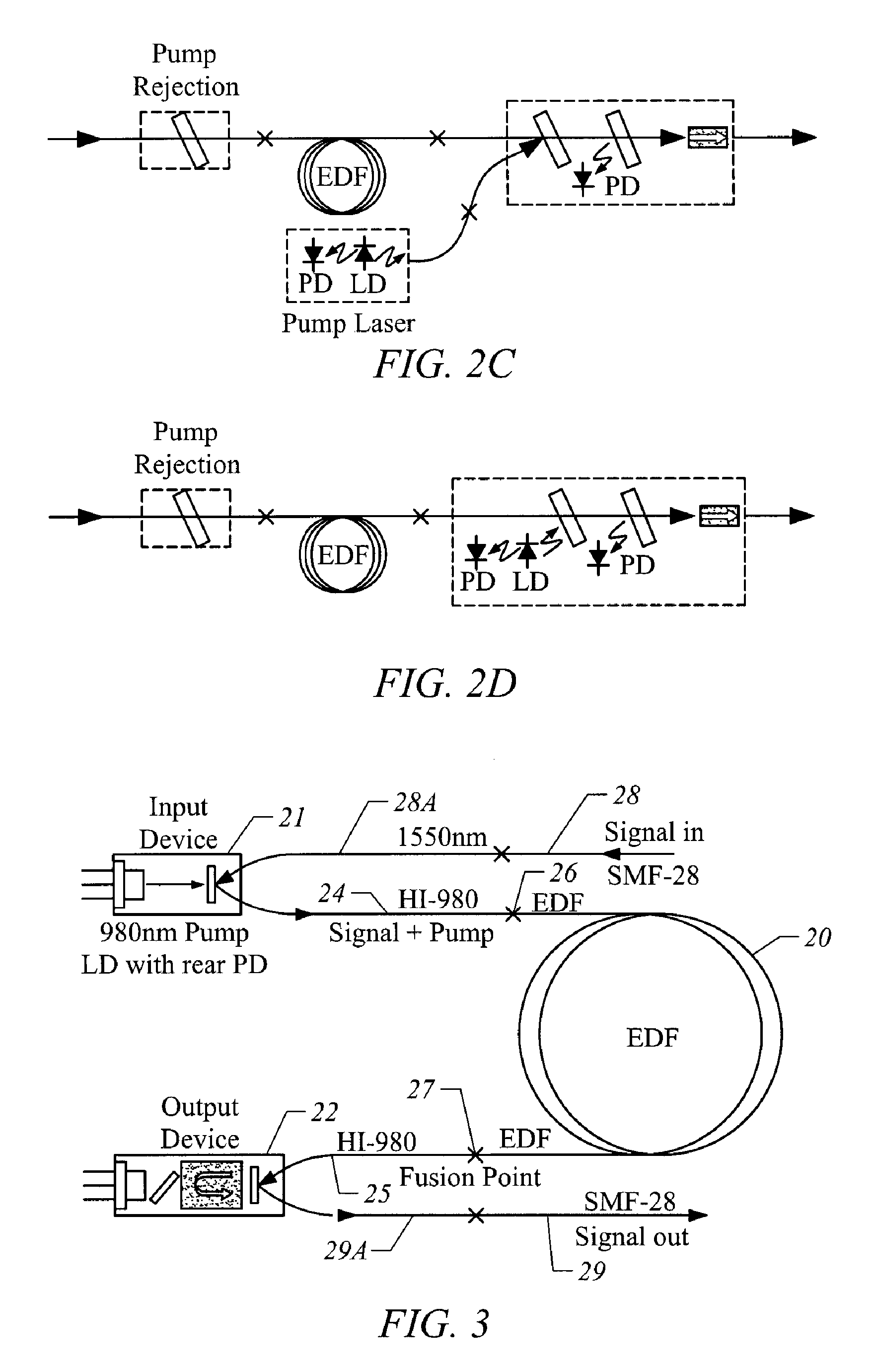Erbium-doped fiber amplifier and integrated circuit module components
a fiber amplifier and integrated circuit technology, applied in the field of fiberoptic systems and networks, can solve the problems of polarization-dependent gain (pdg), the cost of edfas today is still high, and the use is still difficult, so as to improve the coupling efficiency of laser diodes, and improve the effect of numerical apertur
- Summary
- Abstract
- Description
- Claims
- Application Information
AI Technical Summary
Benefits of technology
Problems solved by technology
Method used
Image
Examples
Embodiment Construction
[0019] To amplify optical signals carried on an optical fiber, the optical fiber is severed and an EDFA is inserted between the two parts of the optical fiber. Optical signals are typically in the 1550 nm wavelength range; for WDM systems, the signals fall within specific wavelength ranges which define a grid of WDM communication channels. The EDFA increases the strength of these signals at their particular wavelengths.
[0020]FIG. 1 illustrates the general features, organization and operation of an EDFA between two parts 18 and 19 of an optical fiber carrying signals. The EDFA is formed by a section 10 of erbium-doped fiber, which amplifies the optical signals passing through the section 10. To provide the amplification energy for the EDF section 10, an optical pump in the form of a laser 11 is connected to one end of the section 10 by a WDM (Wavelength Division Multiplexer) 12. The WDM 12 is connected to the input optical fiber 18 which carries the optical signals into the EDFA and...
PUM
 Login to View More
Login to View More Abstract
Description
Claims
Application Information
 Login to View More
Login to View More - R&D
- Intellectual Property
- Life Sciences
- Materials
- Tech Scout
- Unparalleled Data Quality
- Higher Quality Content
- 60% Fewer Hallucinations
Browse by: Latest US Patents, China's latest patents, Technical Efficacy Thesaurus, Application Domain, Technology Topic, Popular Technical Reports.
© 2025 PatSnap. All rights reserved.Legal|Privacy policy|Modern Slavery Act Transparency Statement|Sitemap|About US| Contact US: help@patsnap.com



